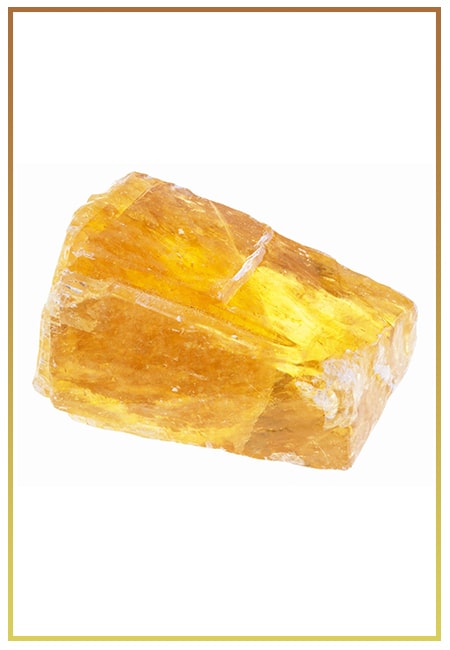- Written By Team DWS
- Festivals
- January 30, 2025
A Day in Forecasting: Celebrating National Weatherperson's Day with Fun Facts
Each year on February 5th, we take a moment to celebrate National Weatherperson's Day, honoring the dedicated meteorologists and weather enthusiasts who tirelessly work to keep us informed about what nature has in store. Their efforts are crucial, especially given the unpredictability of weather patterns that can significantly affect lives, livelihoods, and the environment. As we celebrate this unique day, let’s delve into a typical day in the life of a weatherperson and uncover some fun facts that highlight the fascinating world of meteorology.
-dws638737983528315034.jpg)
The Daily Routine of a Weatherperson
For a meteorologist, each day begins early, often before the sun rises. The first priority? Analyzing data from various sources. From radar images to satellite observations, meteorologists have a plethora of information at their fingertips. The goal is to interpret this data accurately, using complex models and algorithms to predict upcoming weather events.
- Morning Data Gathering: The day kicks off with a review of global weather patterns. Weather forecasts require extensive data collection—from surface temperature readings and air pressure changes to humidity levels and wind speeds. Advanced meteorological tools, such as Doppler radar and weather balloons, play a crucial role in gathering real-time information.
- Model Analysis: After gathering data, weatherpersons analyze different forecasting models. These models simulate atmospheric conditions and predict future weather scenarios. Meteorologists compare several models to ensure the most accurate forecast.
- Creating the Forecast: Once the data and models are analyzed, it's time to craft the forecast. This involves determining temperatures, precipitation chances, and severe weather alerts. Every detail counts—it could be the difference between a successful prediction and a missed opportunity to warn the public.
- Communication: An essential part of a meteorologist’s role is effectively communicating their findings. This can be through television broadcasts, social media, or written reports. A good weatherperson knows how to convey complex information in an understandable manner, ensuring that everyone from emergency responders to everyday citizens can act appropriately based on the forecast.
- Monitoring Updates: Weather can change rapidly, so meteorologists continuously monitor conditions. The job doesn’t end once the forecast is delivered; they stay vigilant, ready to update and respond to new developments, ensuring that communities are informed as situations evolve.
Fun Facts About the World of Weather
As we celebrate National Weatherperson’s Day, let’s explore some intriguing facts about meteorology that you might not know:
- Weather Prediction Has Come a Long Way: The first organized weather service in the world was established in 1861 by the United States. Today, meteorologists use advanced technology, including artificial intelligence and machine learning, to enhance accuracy in forecasting.
- Meteorology Is Multidisciplinary: Meteorology is not just about predicting rain or sunshine; it also involves physics, mathematics, chemistry, and computer science. A complete understanding of atmospheric science requires knowledge from various fields, making it an interdisciplinary endeavor.
- The Importance of Radar: Doppler radar technology revolutionized weather forecasting. It helps meteorologists track severe weather events like tornadoes and hurricanes by measuring the velocity of precipitation, allowing for timely warnings to be issued.
- Lightning Strikes More Than You Think: Approximately 25 million lightning strikes occur in the United States each year. These strikes are powerful—each bolt can carry up to one billion volts of electricity!
- It's All About the Data: Weather data collection began with ships in the 18th century. Sailors recorded atmospheric conditions during their journeys, which laid the groundwork for modern meteorological studies.
- Weather Factors Can Affect Mood: Ever noticed how a sunny day can lift your spirits? Research shows that weather can significantly impact mental health. For instance, seasonal affective disorder (SAD) often affects individuals during winter months when sunlight is scarce.
Conclusion: Honoring Our Weather Heroes
As we commemorate National Weatherperson's Day, it's essential to recognize the individuals behind the scenes—the trained professionals who dedicate their lives to understanding the Earth's atmosphere. Their role goes beyond simply telling us whether to carry an umbrella; they're vital for protection during severe weather and play a key role in disaster preparedness.
The next time you check the weather forecast, take a moment to appreciate the science, skill, and dedication that goes into it. Whether it’s sunny skies or stormy weather, the work of meteorologists is vital to our daily lives, and they deserve to be celebrated not just on February 5th, but all year round. Happy National Weatherperson's Day!
-dws638737983418629225.jpg)
National Weatherperson’s Day FAQs
Feel free to ask any specific questions you might have about National Weatherperson's Day!
Certainly! Here’s a list of frequently asked questions (FAQs) about National Weatherperson’s Day:
Q1: What is National Weatherperson’s Day?
A1: National Weatherperson’s Day is celebrated on February 5 each year in the United States to honor the contributions and efforts of weather forecasters, meteorologists, and all individuals involved in weather prediction and reporting.
Q2: Why is February 5 chosen as National Weatherperson’s Day?
A2: February 5 was chosen to commemorate the birth of John Jeffries, one of America’s first meteorologists. Jeffries kept detailed weather records in the 18th century and significantly contributed to the field of meteorology.
Q3: How is National Weatherperson’s Day celebrated?
A3: Celebrations can vary but typically include activities such as educational events, school programs, social media recognition, and appreciation gestures toward weather professionals, like sending thank-you notes or messages.
Q4: Who can be recognized on National Weatherperson’s Day?
A4: Anyone involved in the field of meteorology can be recognized, including meteorologists, weather reporters, researchers, and even the technology teams that support weather prediction services.
Q5: Why is it important to recognize weather professionals?
A5: Recognizing weather professionals is important because they play a crucial role in public safety by providing timely and accurate weather forecasts and warnings, helping people prepare for severe weather conditions.
Q6: How can the public get involved in National Weatherperson’s Day?
A6: The public can get involved by learning more about weather science, engaging with meteorologists on social media, participating in local events or programs, or simply expressing gratitude towards weather professionals in their community.
Q7: Are there any specific events held on National Weatherperson’s Day?
A7: Various local and national meteorological organizations may host events such as open houses, educational webinars, or school outreach programs to increase awareness about weather science.
Q8: Can schools participate in National Weatherperson’s Day?
A8: Yes! Schools are encouraged to participate by incorporating weather-related lessons into their curriculum, hosting guest speakers from local meteorological agencies, or organizing weather-themed projects and activities.
Q9: Is National Weatherperson’s Day recognized officially?
A9: While National Weatherperson’s Day is widely celebrated and recognized by meteorological organizations and communities, it is not a federal holiday. However, it is officially recognized on calendars and by various institutions.
Q10: Where can I find more information about National Weatherperson’s Day?
A10: More information can be found on websites of meteorological organizations, educational resources, and social media platforms that focus on weather education and awareness.
Feel free to ask if you need more information or specific details!
Popular on Blogs

Black Tourmaline: Meaning, Healing Properties, Fascinating Facts, Powerful Attributes, Versatile Uses, and Beyond
September 05, 2023 / BY Team DWS
Black Tourmaline, also known as Schorl, is a highly revered crystal with incredible metaphysical properties. It derives its name from the Dutch word "turamali," meaning "stone with ..

Carnelian Stone: Meaning, Healing Properties, Power, Facts, Color, Uses and More
December 26, 2023 / BY Team DWS
Carnelian is a vibrant and captivating gemstone that holds a plethora of meanings, healing properties, and powers. Its warm and fiery energy makes it a popular choice among crystal ..

Citrine: Exploring its Meaning, Healing Properties, Fascinating Facts, Powers, Versatile Uses, and Much More
November 18, 2023 / BY Team DWS
Citrine, with its warm golden hues, has captured the attention and imagination of people for centuries. This beautiful gemstone, commonly associated with wealth and prosperity, hol ..

Black Onyx: Unveiling the Meaning, Healing Properties, Fascinating Facts, Powerful Attributes, Versatile Uses, and Beyond
July 25, 2023 / BY Team DWS
Black Onyx, a striking gemstone admired for its deep black hue and elegant appearance, has captivated people for centuries. In this comprehensive guide, we will delve into the mean ..

Unveiling the Mysteries of Turquoise Stone: Exploring its Meaning, Healing Properties, Power, Facts, Color, Uses, and More
December 05, 2023 / BY Team DWS
Turquoise, with its captivating blue-green hue, has been adorning jewelry and artifacts for centuries. This striking stone has a rich history, rich symbolism, and a plethora of int ..

The History Behind The Popularity of Red Agate
December 23, 2022 / BY Team DWS
An Agate is a type of magma rock that takes many years till it is washed out naturally into the water. And that is the reason this stone has elements of water. This beautiful stone ..

Plan a Perfect Valentine's Week with Our Valentine Week List 2025
January 22, 2024 / BY Team DWS
Valentine's Day is undoubtedly the most romantic day of the year, but we believe that one day is just not enough to express your love and make your partner feel special. That's why ..

Bloodstone: Unveiling the Meaning, Healing Properties, Facts, Powers, Uses, and More
August 21, 2023 / BY Team DWS
Bloodstone, with its captivating deep green color with specks of red, is a mesmerizing gemstone that has fascinated civilizations for centuries. It possesses unique healing propert ..


